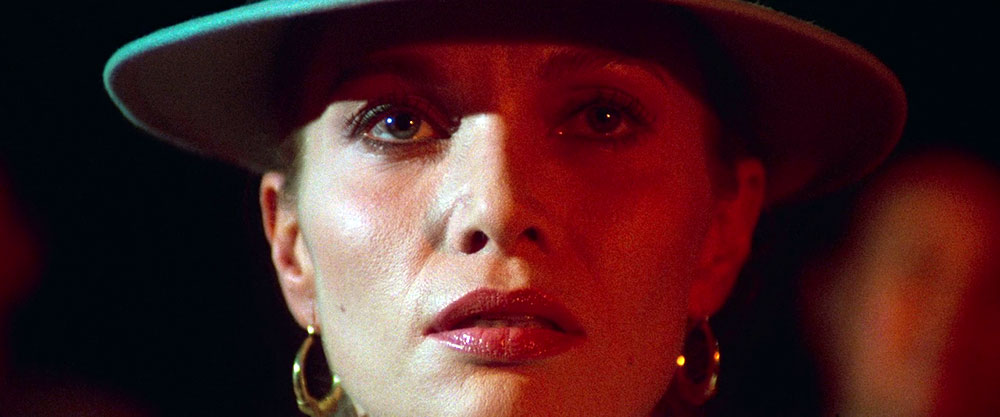In the early ‘80s, rampant serial killer sensationalism catapulted the likes of Peter Sutcliffe and Wayne Williams into household names. New York City, nicknamed “the Fun City,” was a libertine hotbed and 42nd Street was a sex industry stronghold. Meanwhile, in Lucio Fulci’s The New York Ripper (1982), a duck-voiced mutilator hacked and quacked across the five boroughs. His motive? The annihilation of beauty.
The New York Ripper marked Fulci’s return to giallo after a decade’s flirtation with supernatural horror. Banned for two decades in the UK, Ripper grafts the distinctly European sleaze of giallo onto an American landscape. Though the film initiated Fulci’s trilogy of shot-on-location New York splatter flicks (followed by Manhattan Baby, 1982 and Murder Rock, 1984), his catalog never again scratched Ripper’s black hole of depravity. The film’s narrative of murder vignettes is loosely stapled together by a procedural investigation; a conveyor belt of beautiful women are introduced and disposed of with the swish of a blade. In Ripper, most cosmopolitans appear unfazed by the carnage; volcanic misogyny already gropes and leers in every direction, from pervert coroners, to chauvinist cops, to chuckling rapists. A woman-hunting serial killer is just another vermin in a rotten ecosystem.
With streets dressed in a mise-en-scène of refuse, Ripper evokes the New York nihilism and gonzo grime of the era’s No wave cinema. Most Fulci films occupy unfamiliar worlds—zombie-infested Caribbean islands and remote black magic villages in southern Italy—but Ripper sidesteps fantasy for the mundane, nesting violence in the quotidian. Decrepit locales backdrop abject butcherings as a hurricane of violence torrents across dingy backrooms, empty moviehouses, and lawless day bars. Simultaneously, antiseptic offices hum with everyday gadgetry such as the infernal beeping of police station computers and flickering of a criminologist’s state-of-the-art digital chessboard. Ripper sketches 20th-century American life as polarized between the rundown environments of the ostensibly lawless and the clinical gizmo-laden hubs of the so-called lawful. And, in a stroke of misanthropy, Ripper conflates the two, letting casual venom seep indiscriminately from its ensemble of suspects.
In Ripper, the exuberance of giallo appears uncanny amidst the chokehold of big-city depravity. In sharp contrast, flashy grindhouse pomp—frenetic images, jazz fusion—embellish misogynist massacres. Ripper erects a world of grotesque lusts; the camera often pans to tight frames of sweat-stained denim crotches, a pelvis centered as the crux of a libidinal milieu. Extreme close-ups also transmit the movie’s unflinching mutilations, most notoriously in a murder set piece where a razor blade symmetrically bisects an eyeball and nipple. There’s no ambiguity or allegory in Fulci’s violence. Ripper’s murders surge with hyperbolic foley. Every knife-swing is thunderous and every flesh incision screeches like seismic waves shredding apart expanses of earth. Ripper is giallo-style stretched to extremity, an inquiry into how much darkness the form can accommodate. It’s one of the ickiest films of its ilk: a venomous hate-letter to urban modernity.
The New York Ripper screens tonight, July 10, at Alamo Drafthouse Downtown Brooklyn as part of the ongoing series “Weird Wednesday.” Film historian Samm Deighan will introduce the film.



